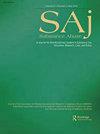物质使用障碍数字治疗的安全性和有效性:来自Nida临床试验网络研究数据的二次分析
IF 2.4
3区 医学
Q2 SUBSTANCE ABUSE
引用次数: 5
摘要
背景:物质使用障碍(sud)的传统治疗严重依赖于面对面的互动,这对患者造成了很大的限制。一项数字治疗(DT)的临床试验表明,在包括阿片类药物使用障碍(OUD)患者在内的人群中,提供行为治疗的安全性和有效性,这些患者未接受丁丙诺啡治疗,丁丙诺啡不是指南推荐的方法。本研究重新分析了排除OUD患者的数据,以更接近现实世界的患者群体。方法:对先前发表的一项随机对照试验中与酒精、大麻、可卡因或其他兴奋剂相关的物质使用障碍患者(n = 399,排除OUD患者)进行二次分析。患者接受了12周的门诊常规治疗(TAU;n = 193)或TAU减少咨询加DT (n = 206)提供计算机认知行为治疗和应急管理。主要结果是第9-12周的戒断和治疗的持续。结果:该分析中的399例患者(DT组206例,TAU组193例)报告了与酒精、大麻、可卡因或其他兴奋剂(如甲基苯丙胺)相关的物质使用障碍。人口统计学和基线特征包括年龄、性别、种族、教育程度和报告的原发性物质使用障碍在治疗组之间是平衡的。DT组的戒断程度明显高于TAU组(40.3 vs 17.6%;P < 0.001),治疗中的滞留率(76.2比63.2%,P = 0.004)。组间不良事件发生率差异无统计学意义(p = 0.68)。结论:结果表明,在与酒精、大麻、可卡因或其他兴奋剂(包括甲基苯丙胺)相关的物质使用障碍患者中,安全地使用DT可以增加戒断(减少物质使用)和保持治疗。本文章由计算机程序翻译,如有差异,请以英文原文为准。
Safety and Efficacy of A Digital Therapeutic for Substance Use Disorder: Secondary Analysis of Data from A Nida Clinical Trials Network Study
Background: Traditional treatments for substance use disorders (SUDs) rely heavily on face-to-face interactions, which pose substantial limitations for patients. A clinical trial of a digital therapeutic (DT), delivering behavioral therapy demonstrated safety and efficacy in a population including patients with opioid use disorder (OUD) not treated with buprenorphine, which is not a guideline-recommended approach. This study re-analyzed the data excluding patients with OUD to more closely approximate real-world patient populations. Methods: Secondary analysis of patients with substance use disorders related to alcohol, cannabis, cocaine, or other stimulants (n = 399, patients with OUD excluded) from a previously-published randomized controlled trial. Patients received 12-weeks of outpatient treatment-as-usual (TAU; n = 193) or TAU with reduced counseling plus a DT (n = 206) providing computerized cognitive behavioral therapy and contingency management. Primary outcomes were abstinence in weeks 9–12 and retention in treatment. Results: The 399 patients in this analysis (206 in the DT group and 193 in the TAU group) reported substance use disorders related to alcohol, cannabis, cocaine, or other stimulants (e.g., methamphetamines). Demographic and baseline characteristics including age, sex, race, education, and reported primary substance use disorder were balanced between treatment groups. Abstinence was significantly higher in the DT group compared to TAU (40.3 vs. 17.6%; p < 0.001) as was retention in therapy (76.2 vs. 63.2%, p = 0.004). Intergroup adverse event rates were not significantly different (p = 0.68). Conclusions: The results demonstrate that use of a DT safely increased abstinence (reduced substance use) and retention in treatment among patients with substance use disorders related to alcohol, cannabis, cocaine, or other stimulants (including methamphetamines).
求助全文
通过发布文献求助,成功后即可免费获取论文全文。
去求助
来源期刊

Substance abuse
SUBSTANCE ABUSE-
CiteScore
5.90
自引率
2.90%
发文量
88
审稿时长
>12 weeks
期刊介绍:
Now in its 4th decade of publication, Substance Abuse journal is a peer-reviewed journal that serves as the official publication of Association for Medical Education and Research in Substance Abuse (AMERSA) in association with The International Society of Addiction Medicine (ISAM) and the International Coalition for Addiction Studies in Education (INCASE). Substance Abuse journal offers wide-ranging coverage for healthcare professionals, addiction specialists and others engaged in research, education, clinical care, and service delivery and evaluation. It features articles on a variety of topics, including:
Interdisciplinary addiction research, education, and treatment
Clinical trial, epidemiology, health services, and translation addiction research
Implementation science related to addiction
Innovations and subsequent outcomes in addiction education
Addiction policy and opinion
International addiction topics
Clinical care regarding addictions.
 求助内容:
求助内容: 应助结果提醒方式:
应助结果提醒方式:


